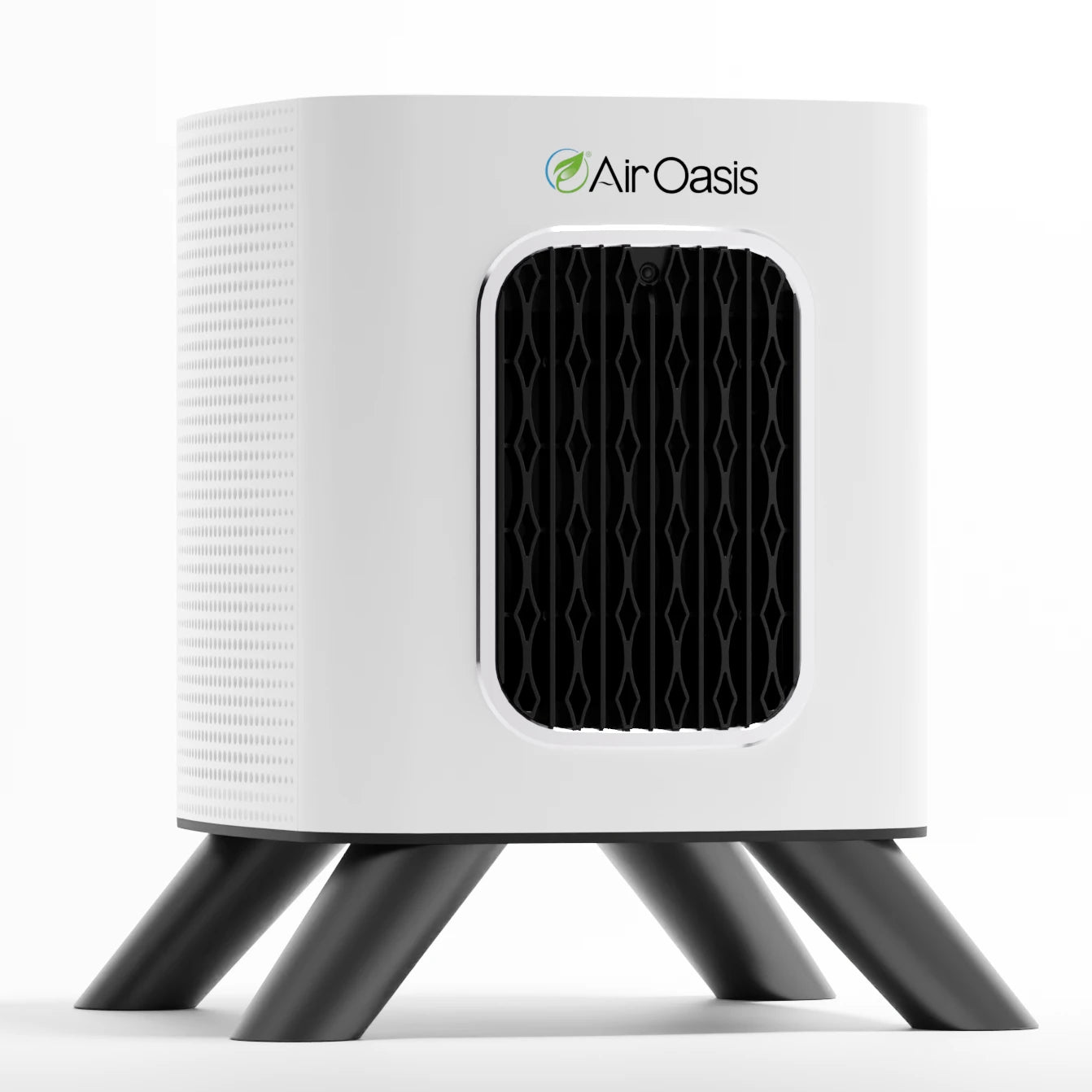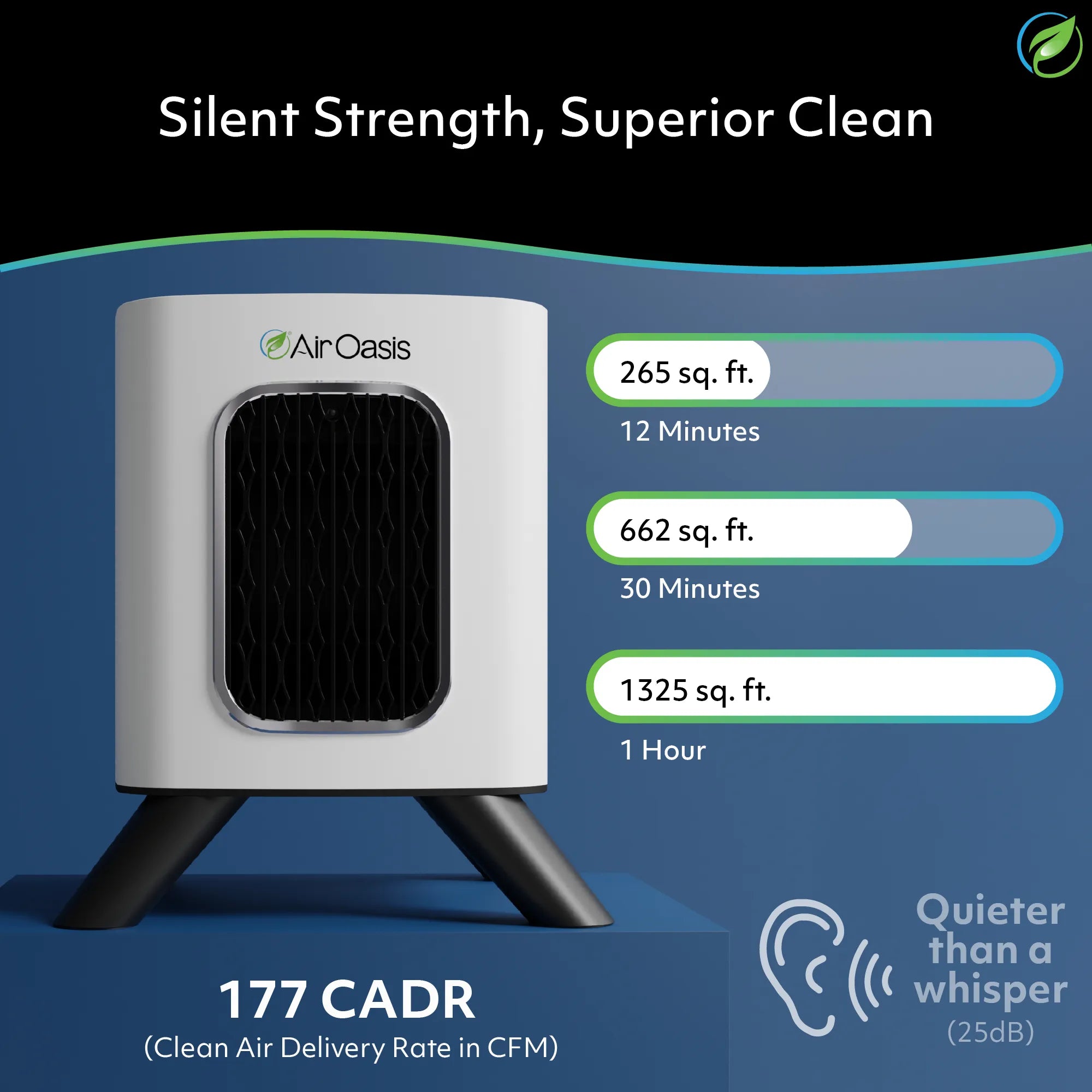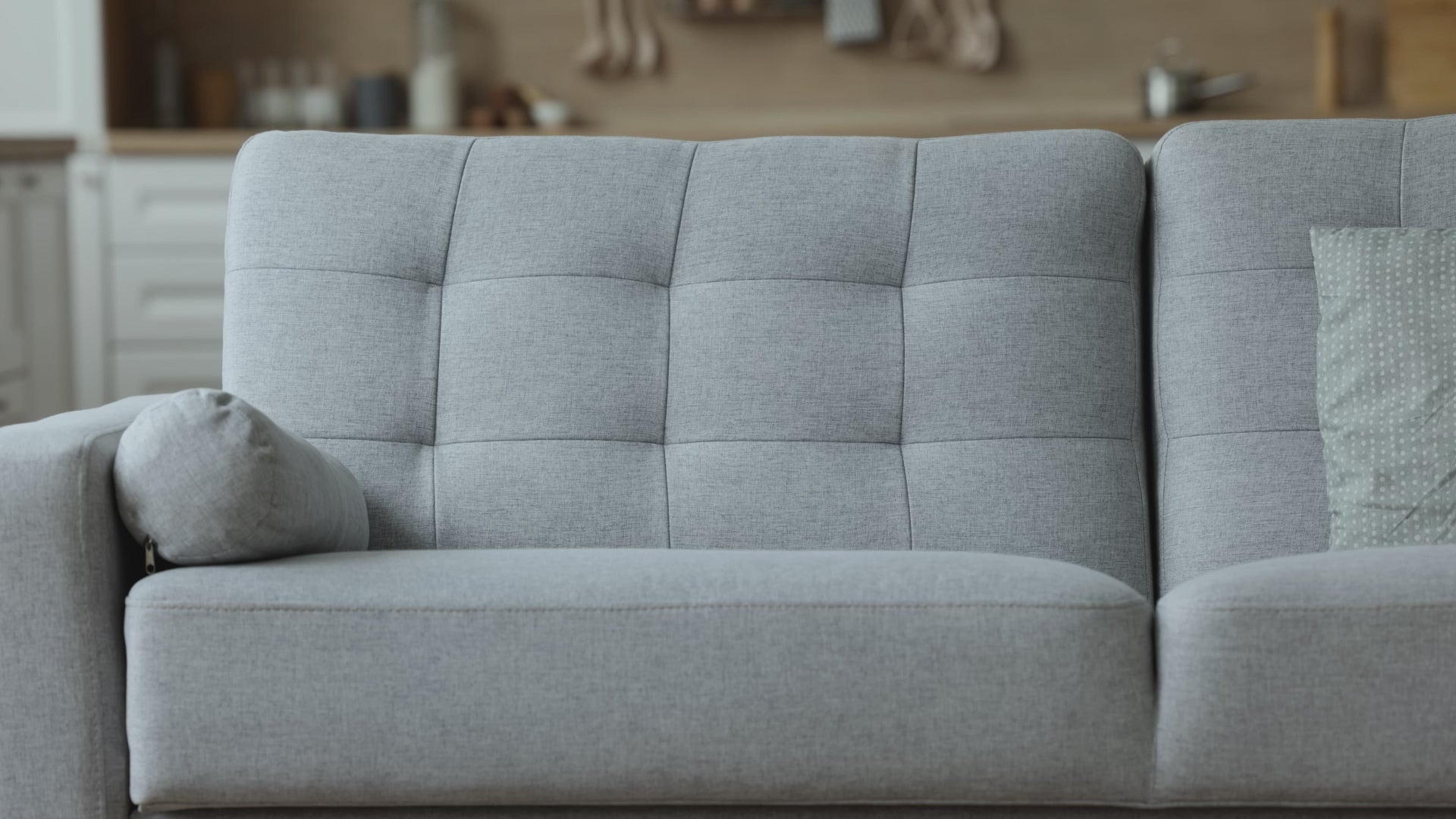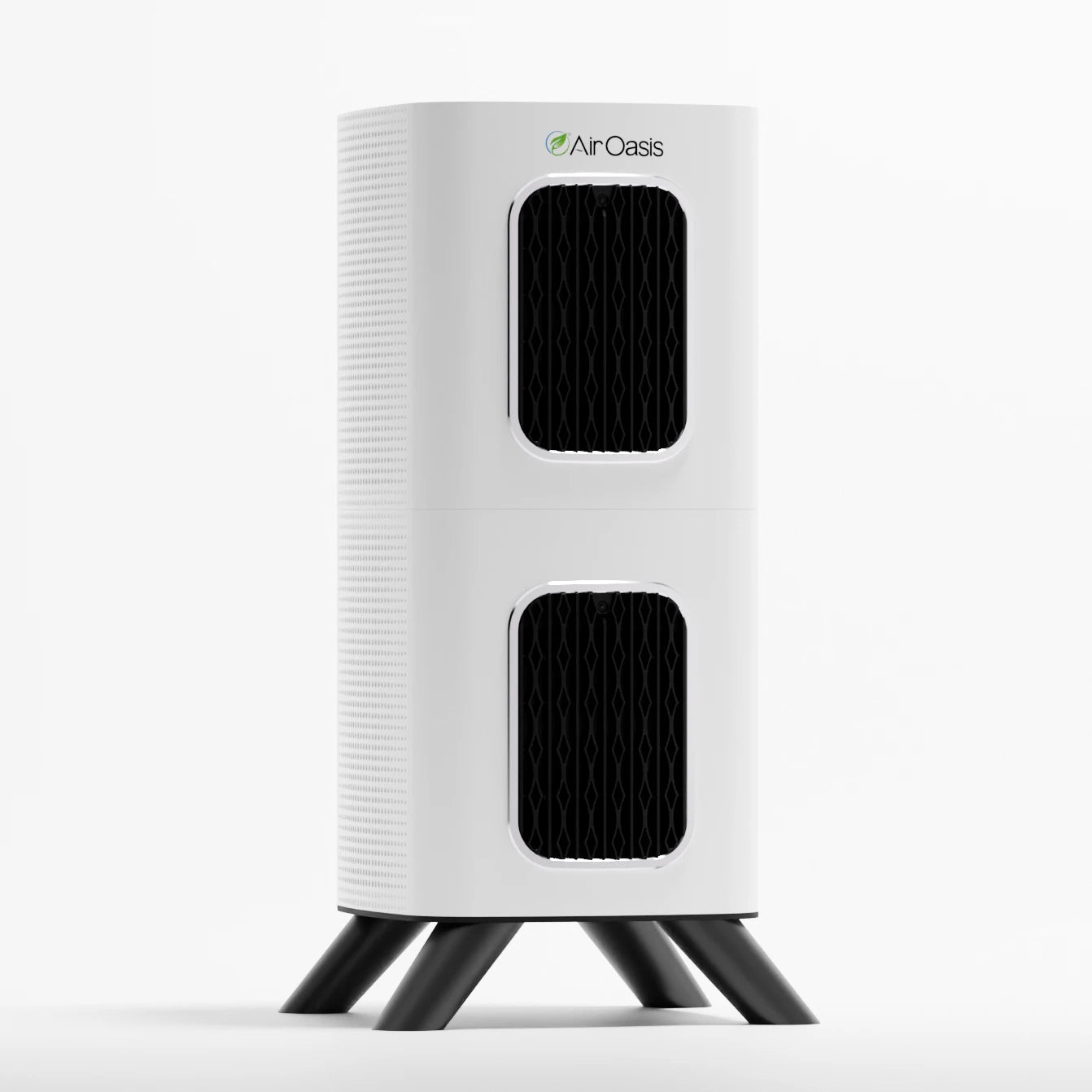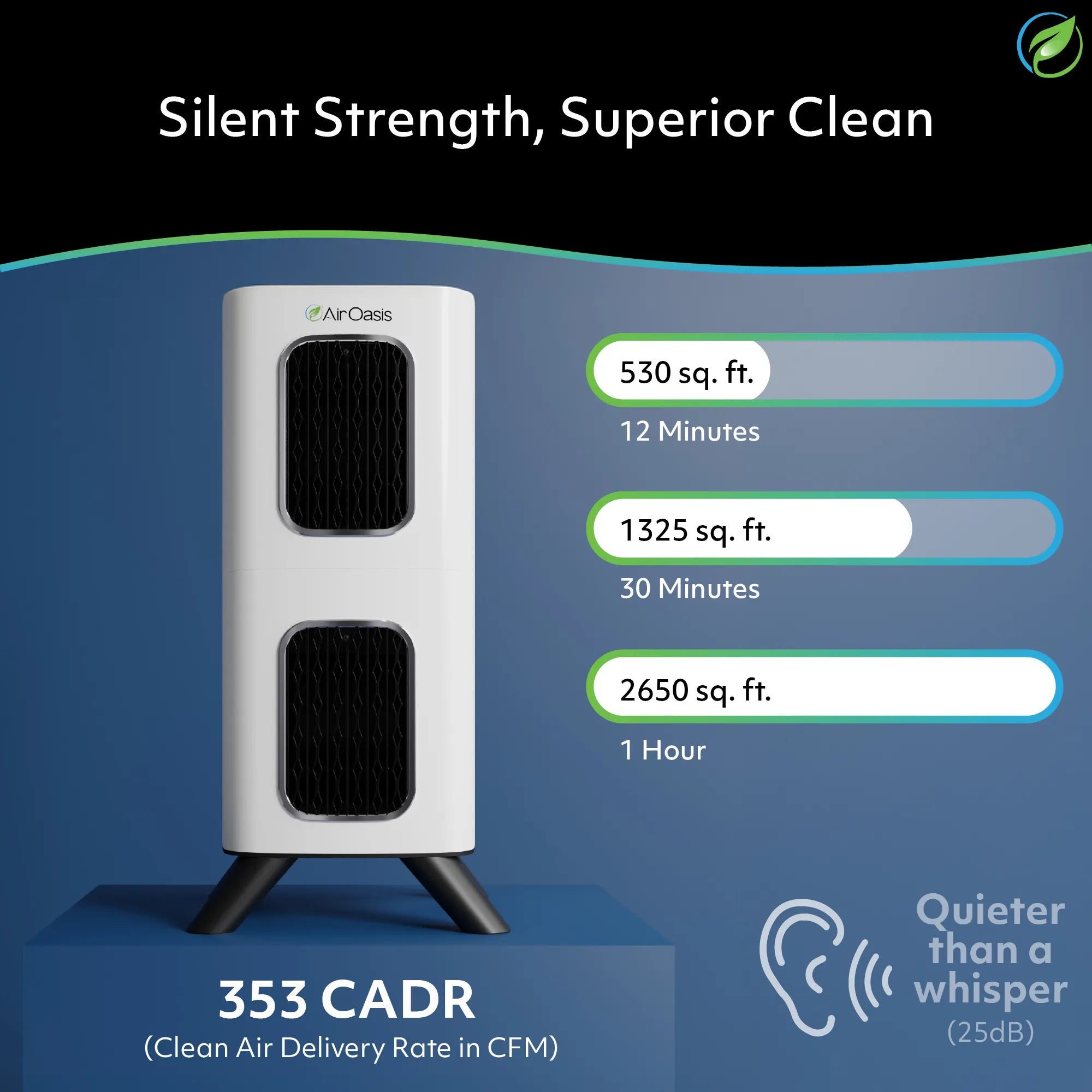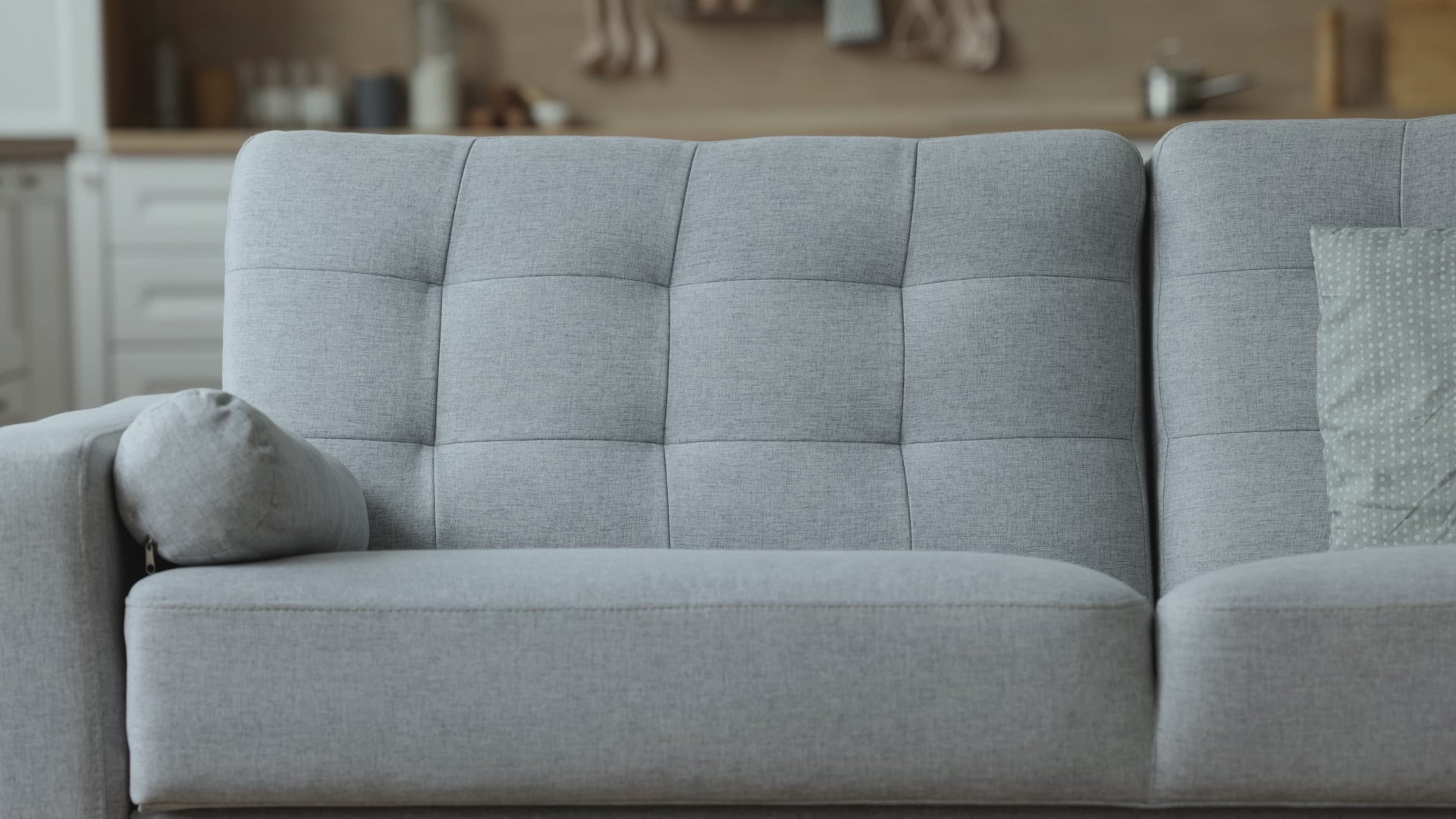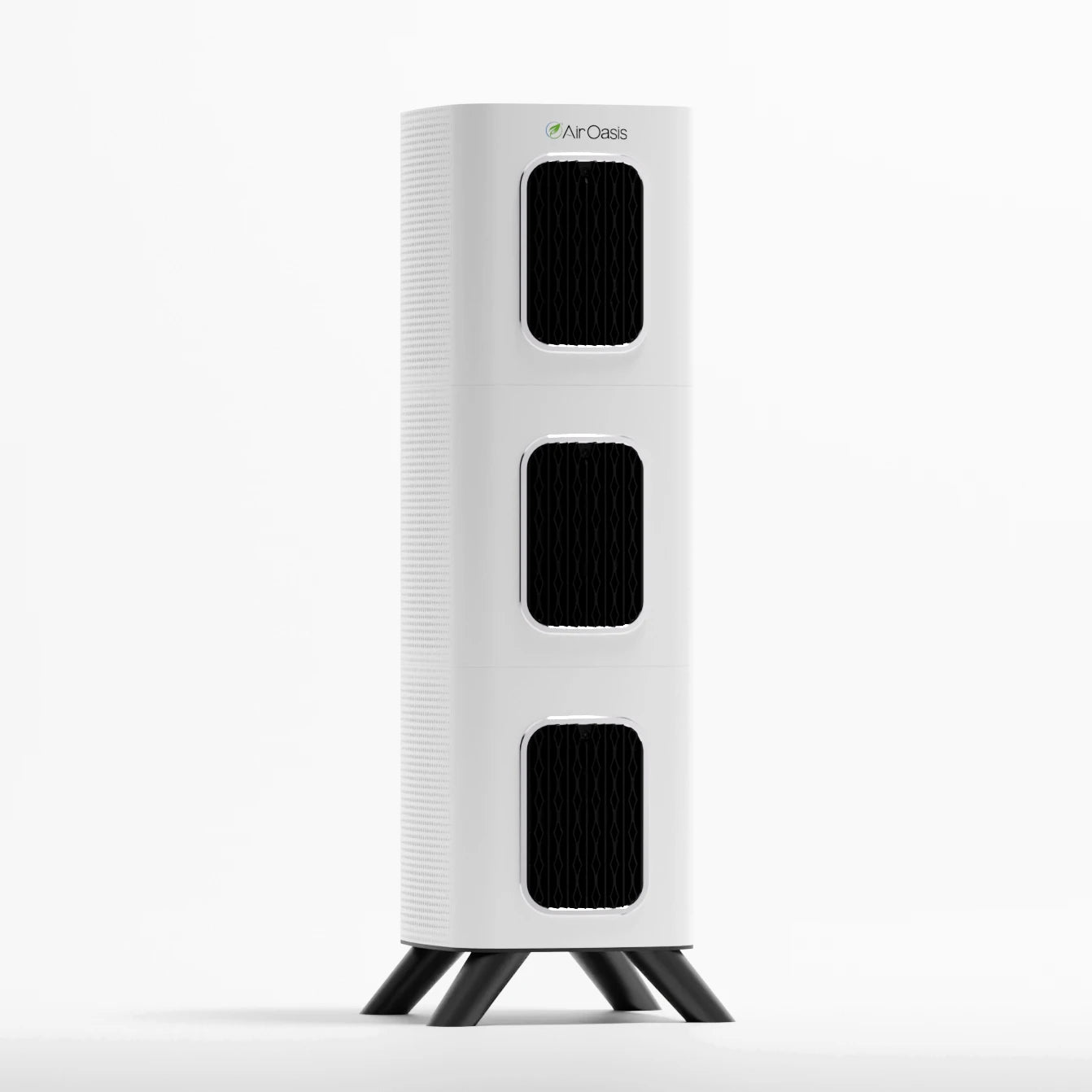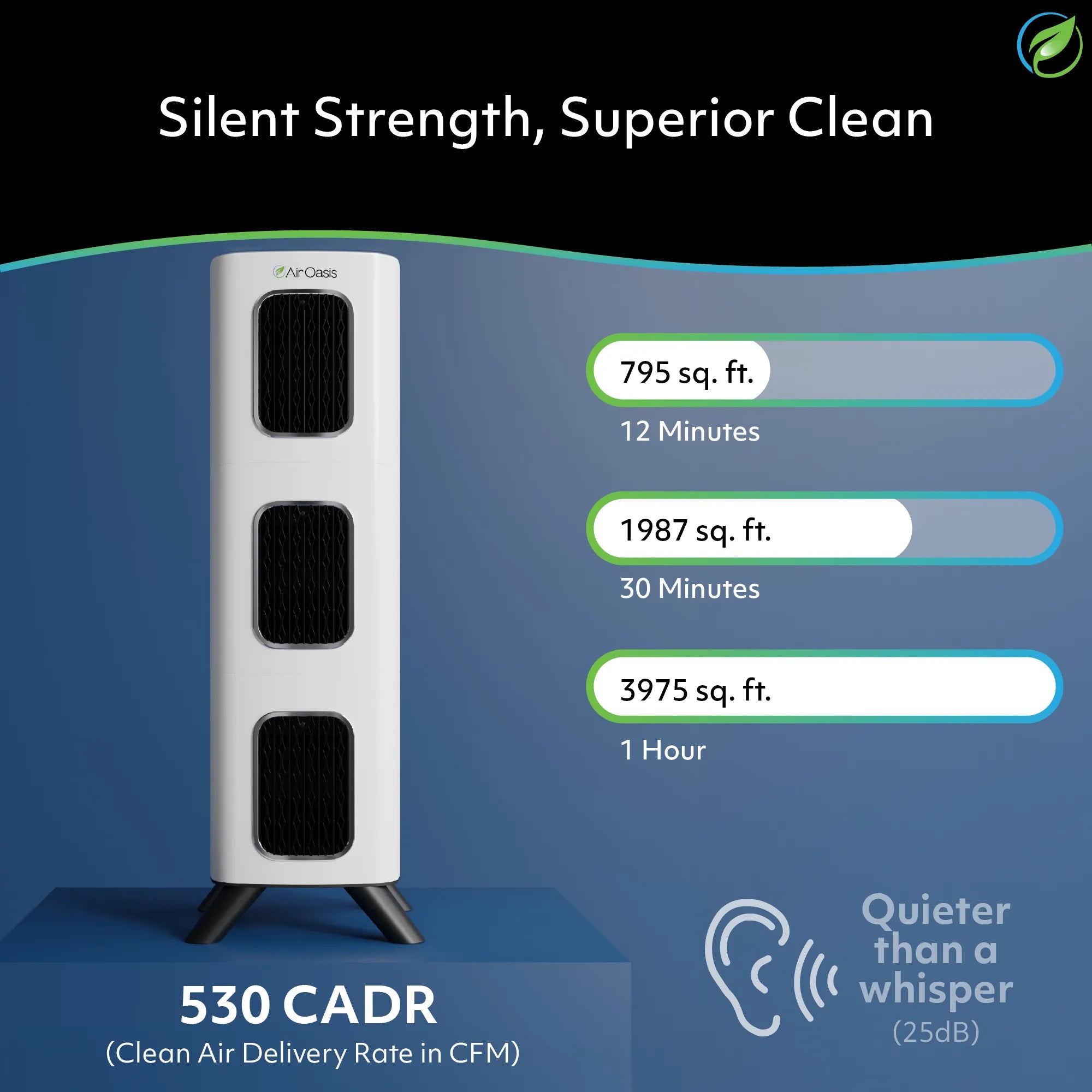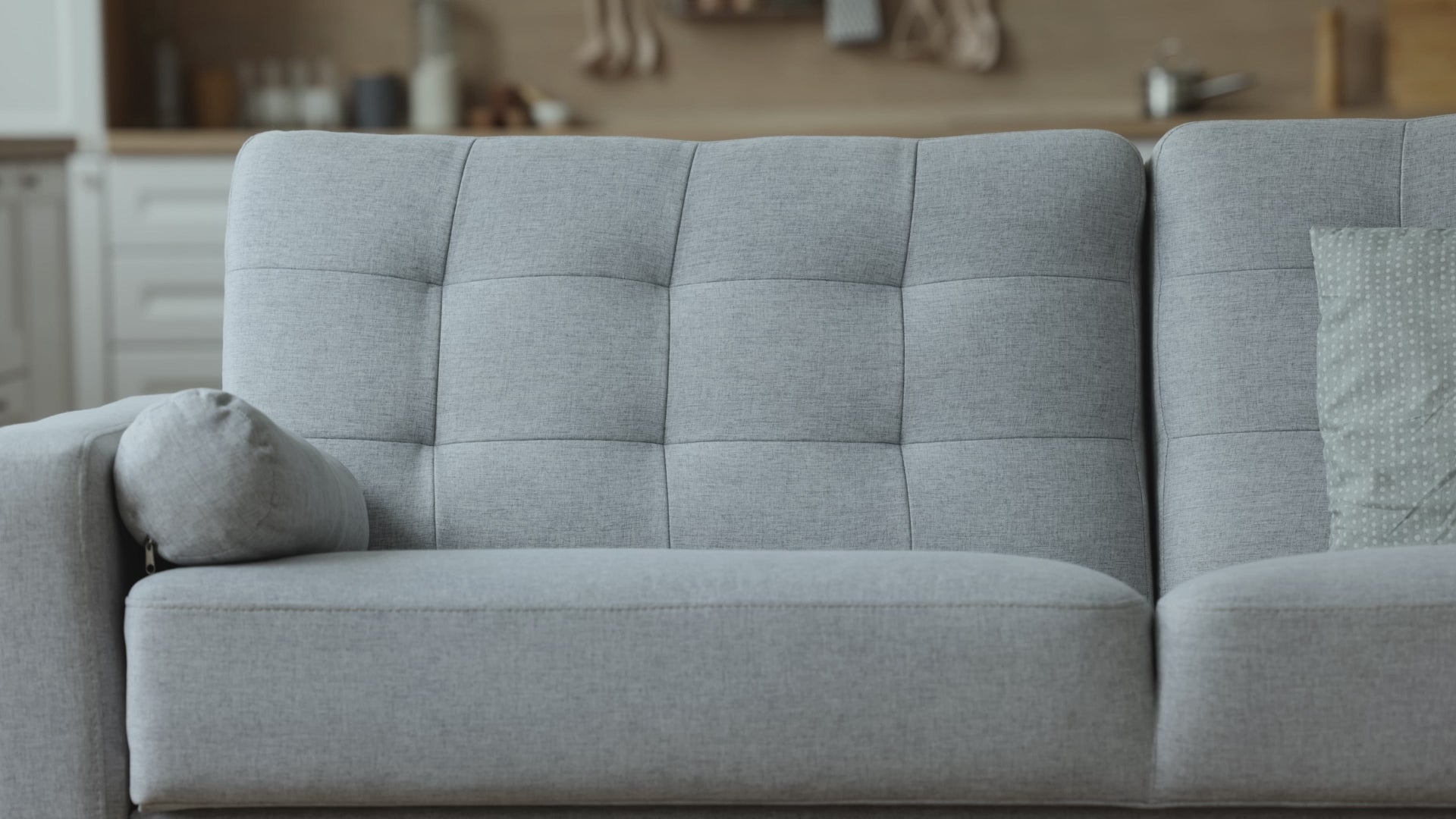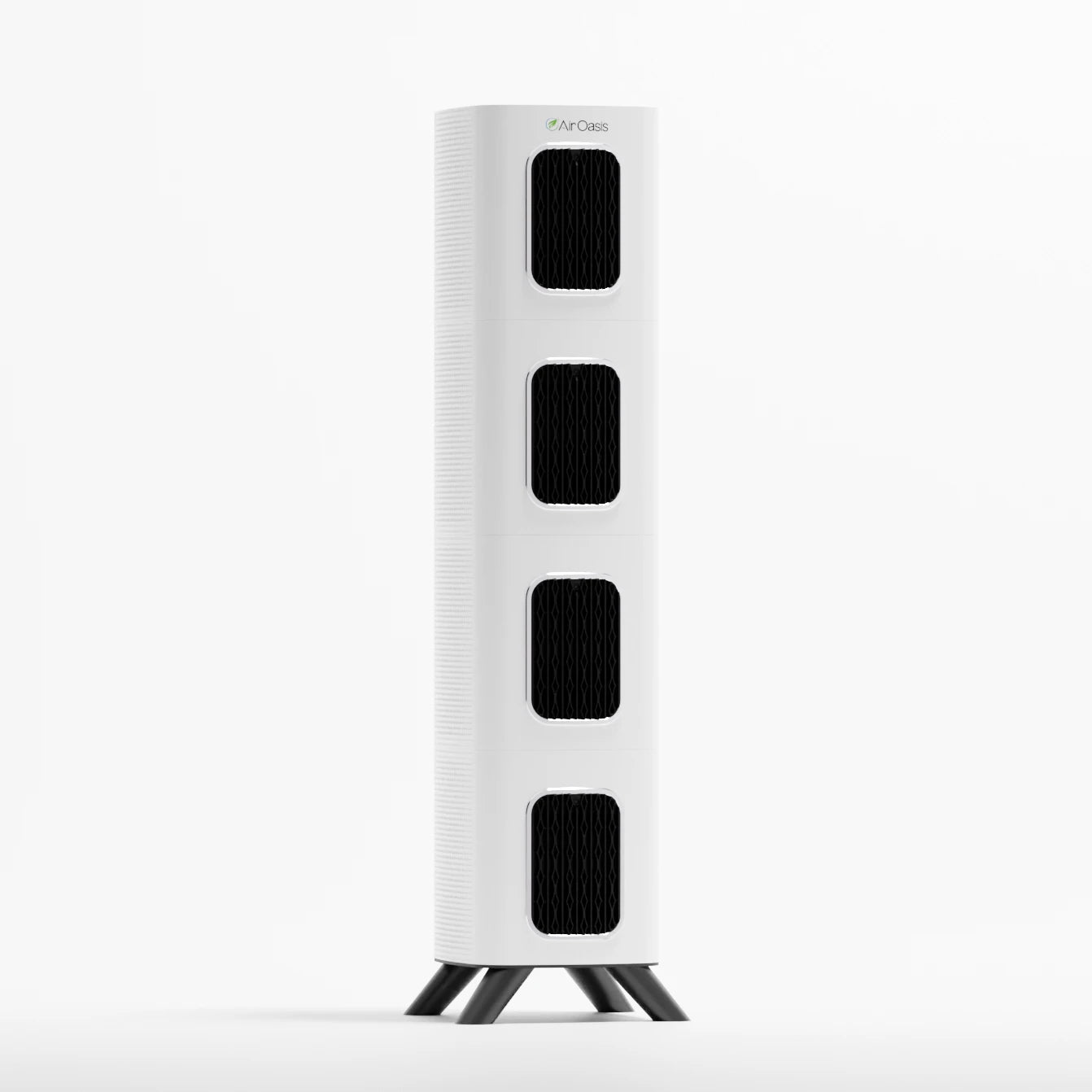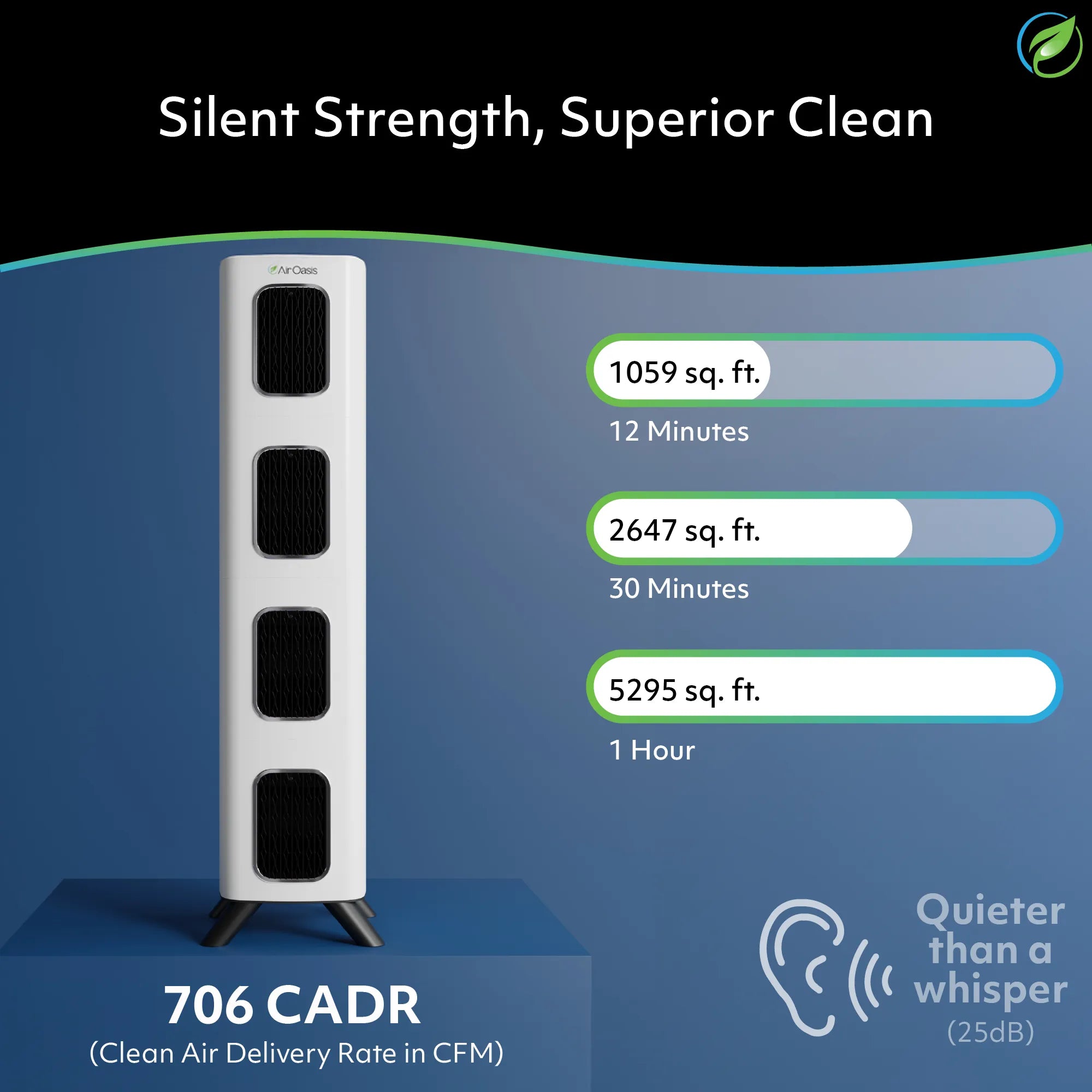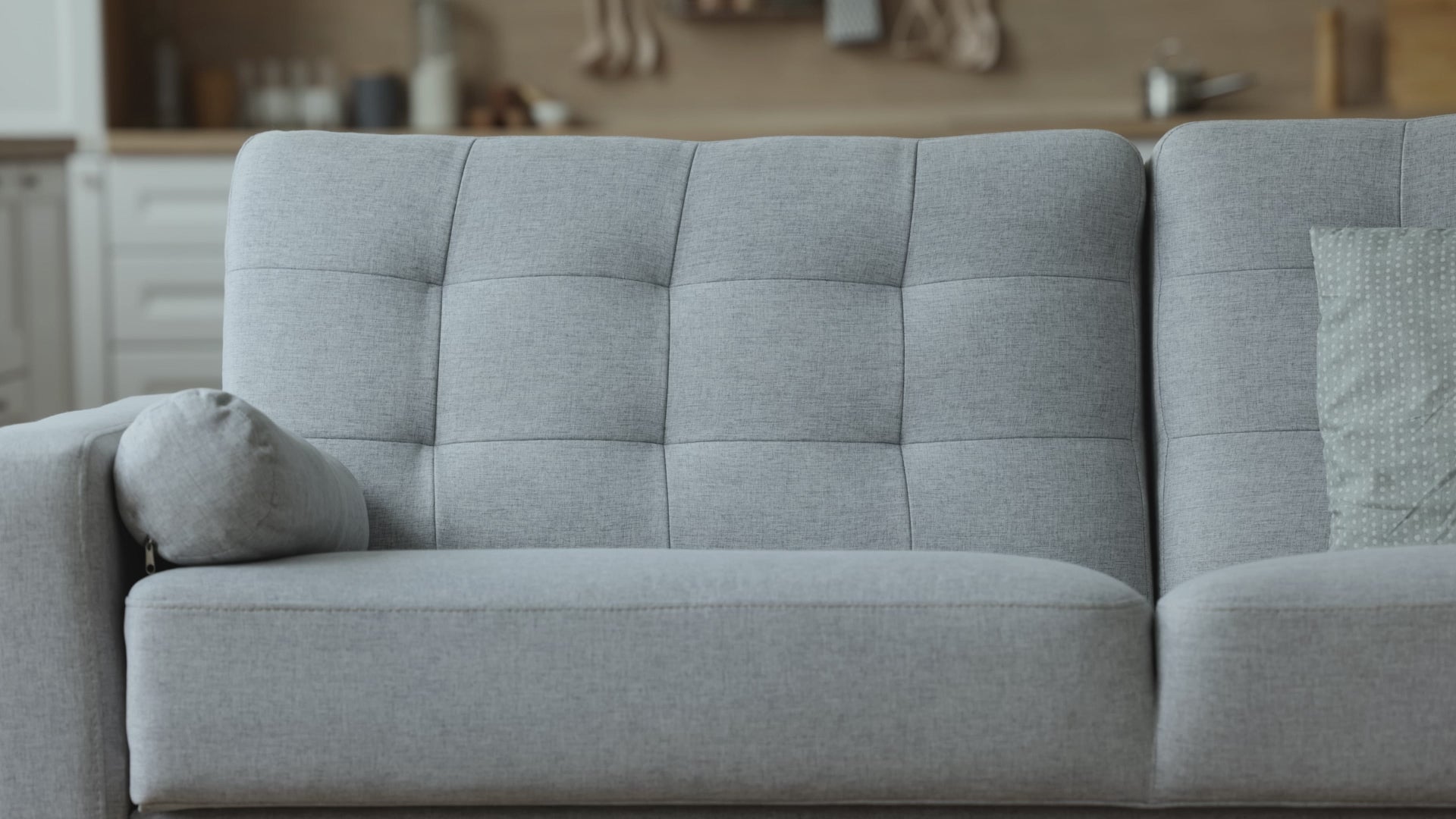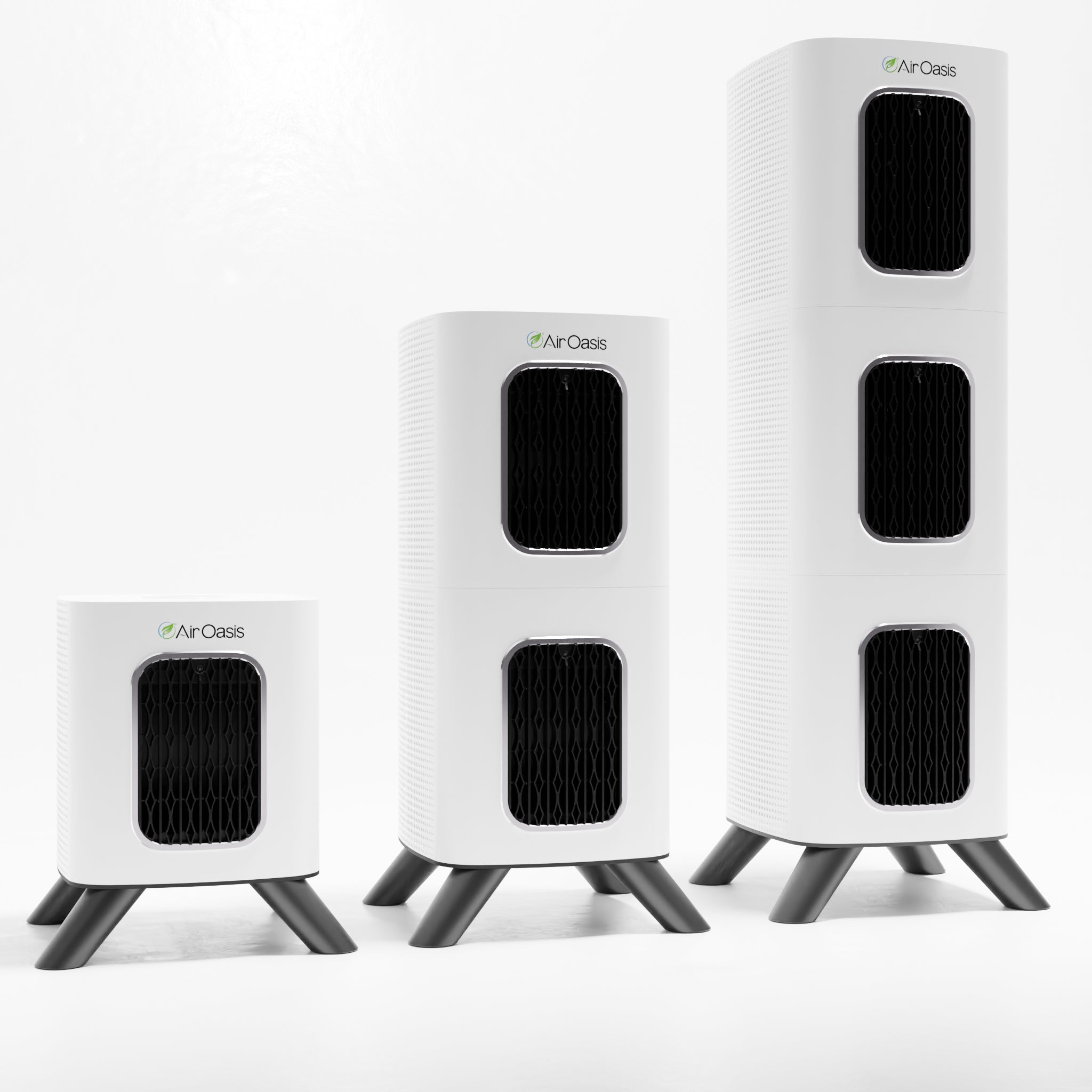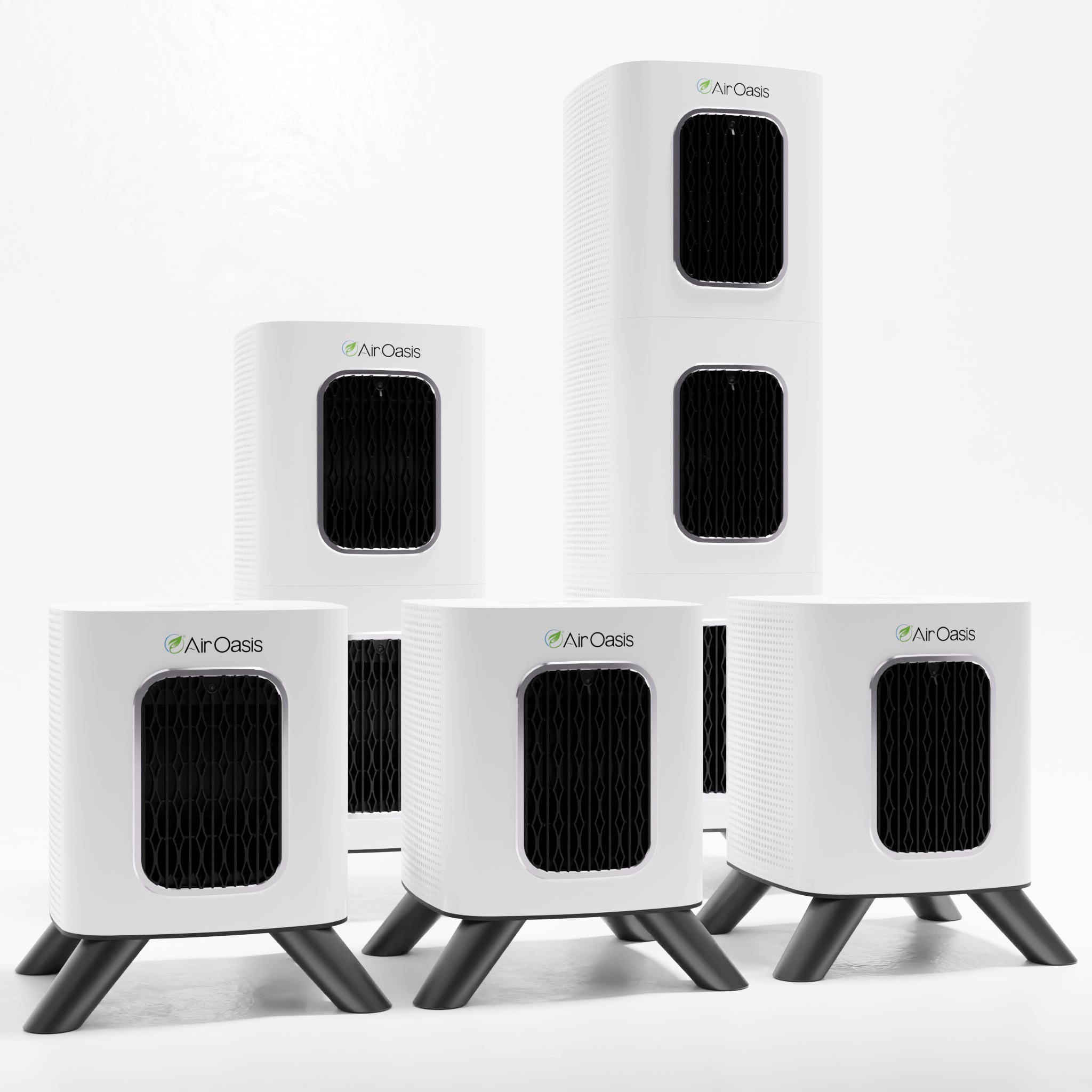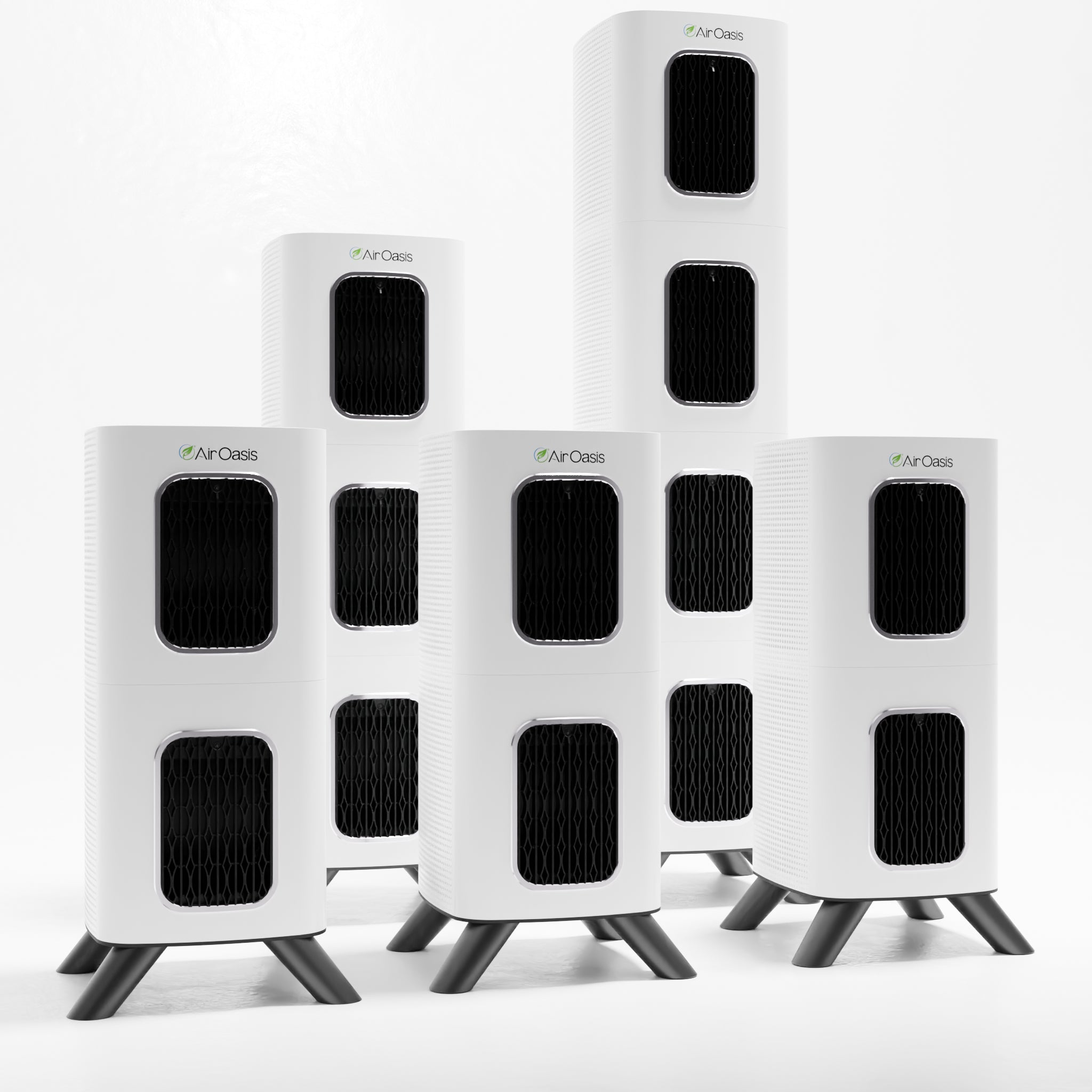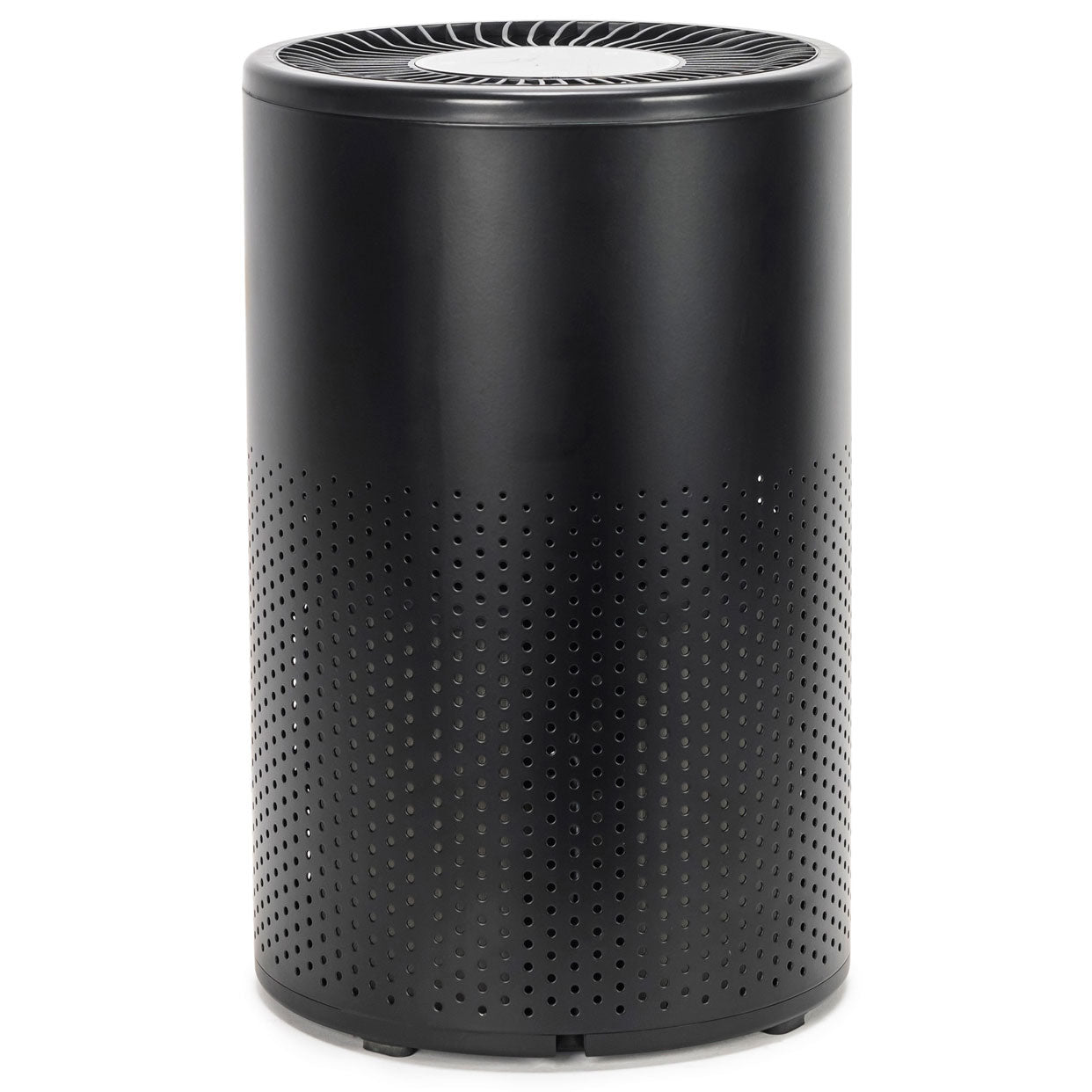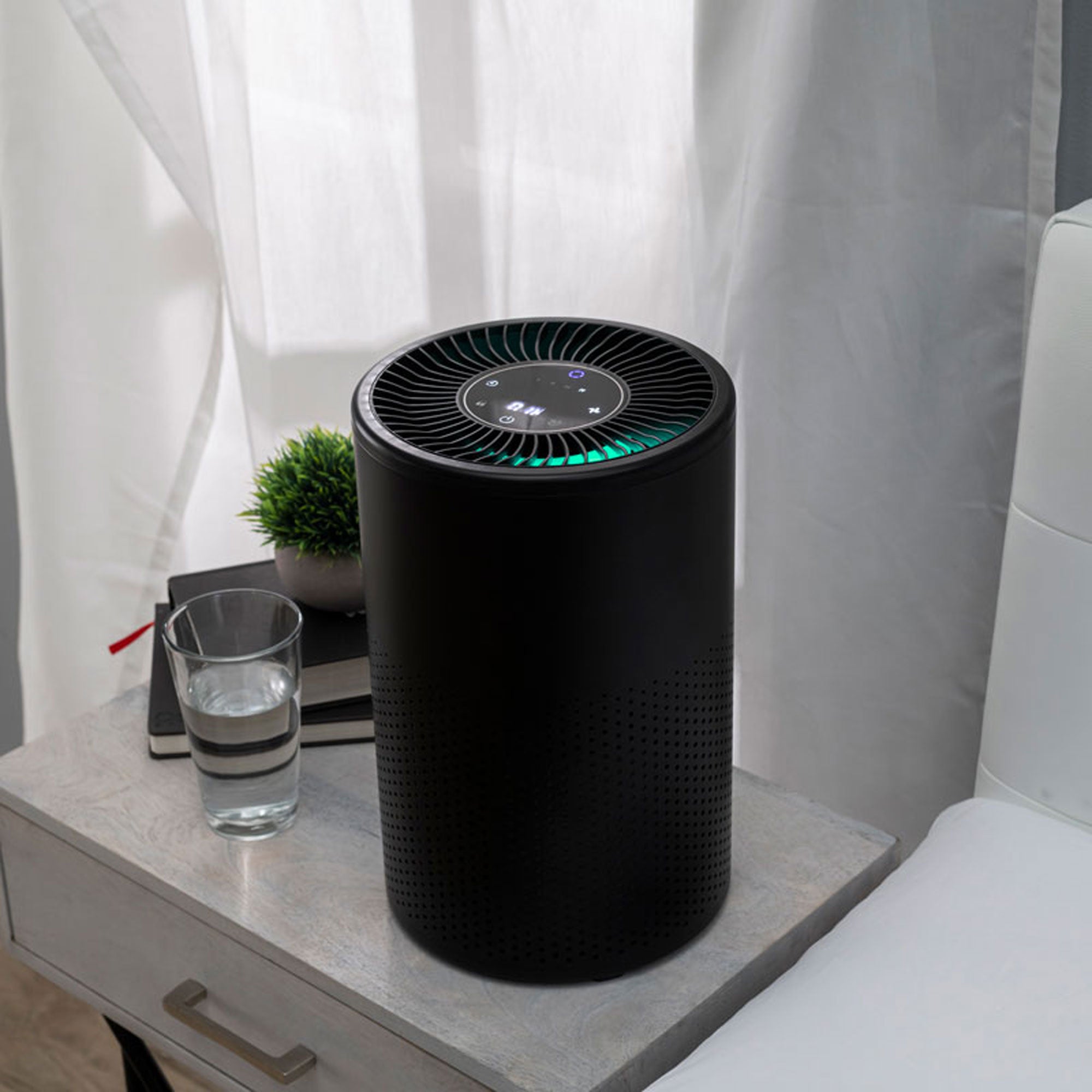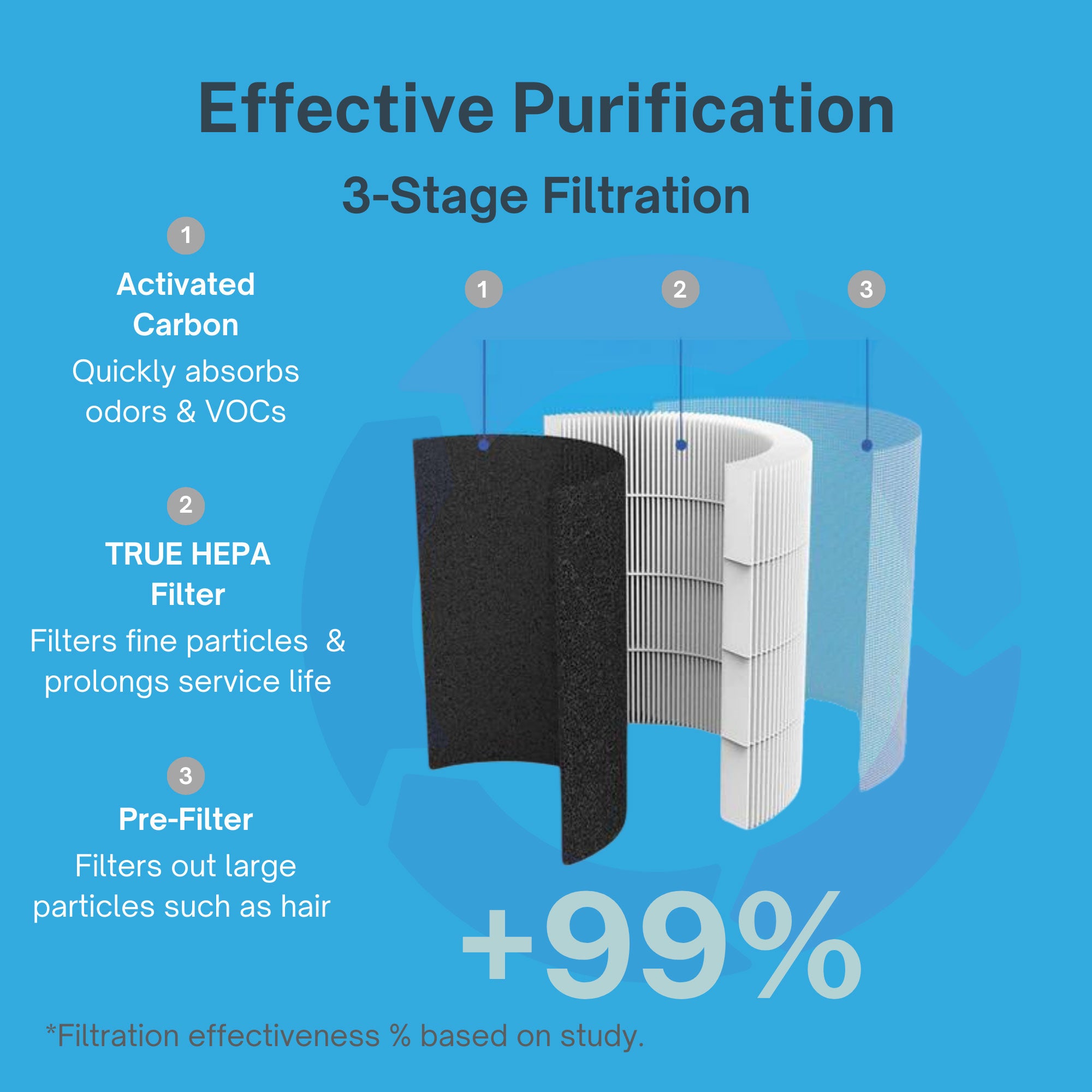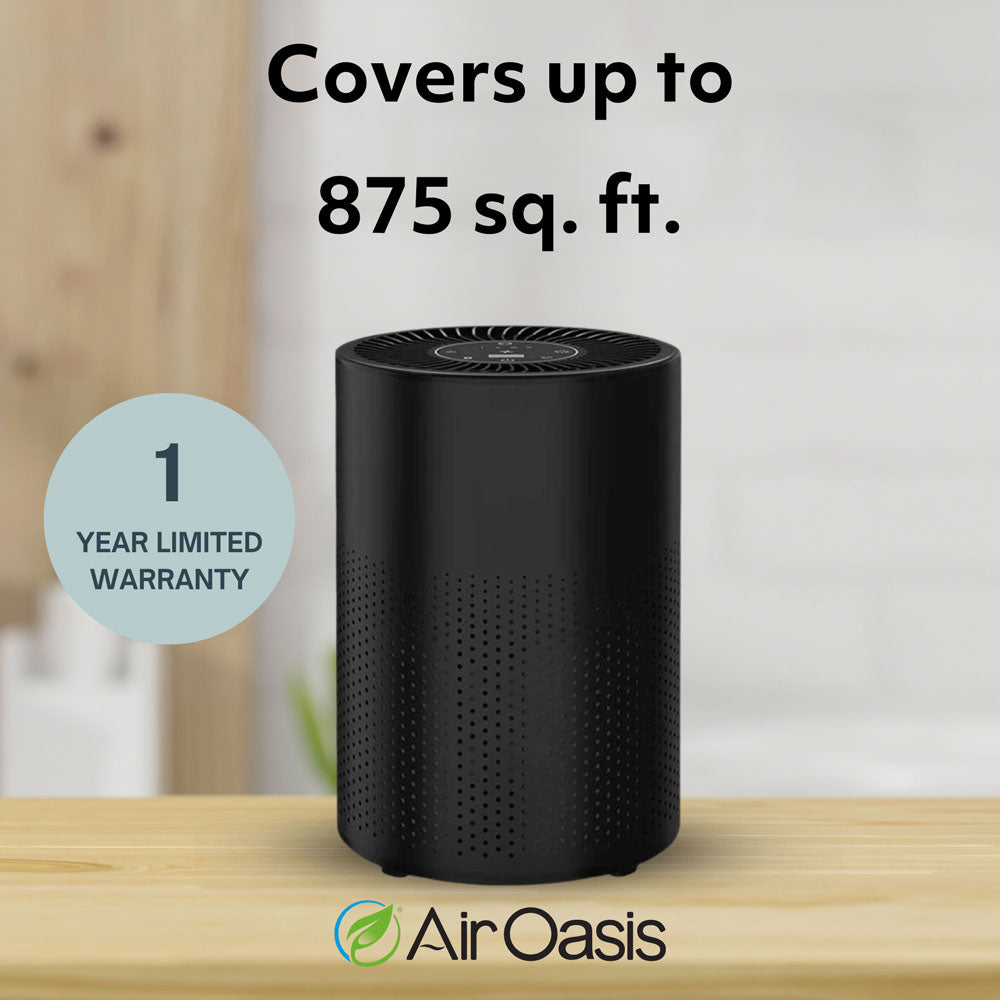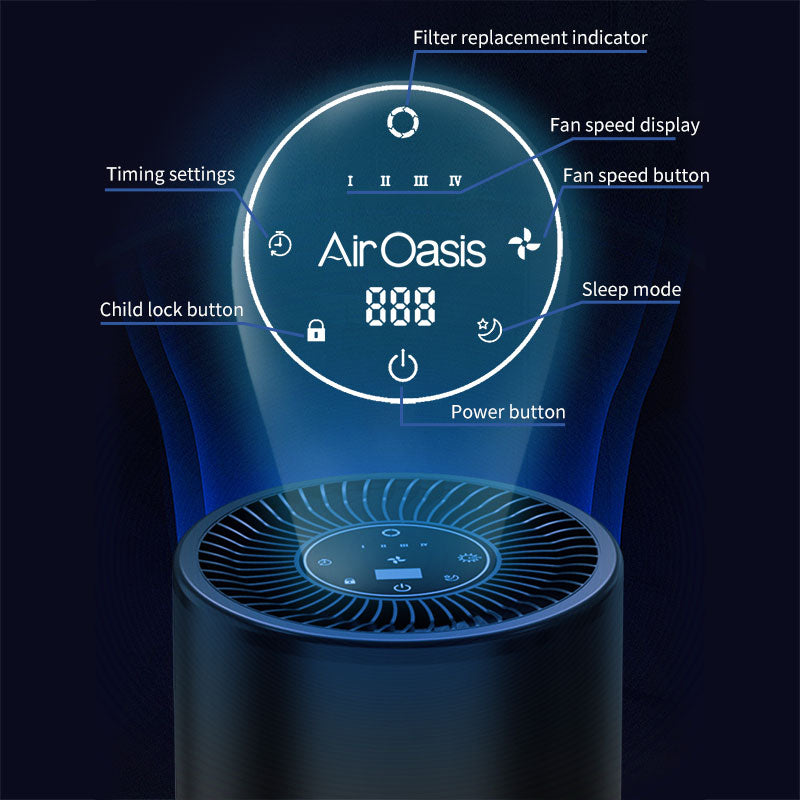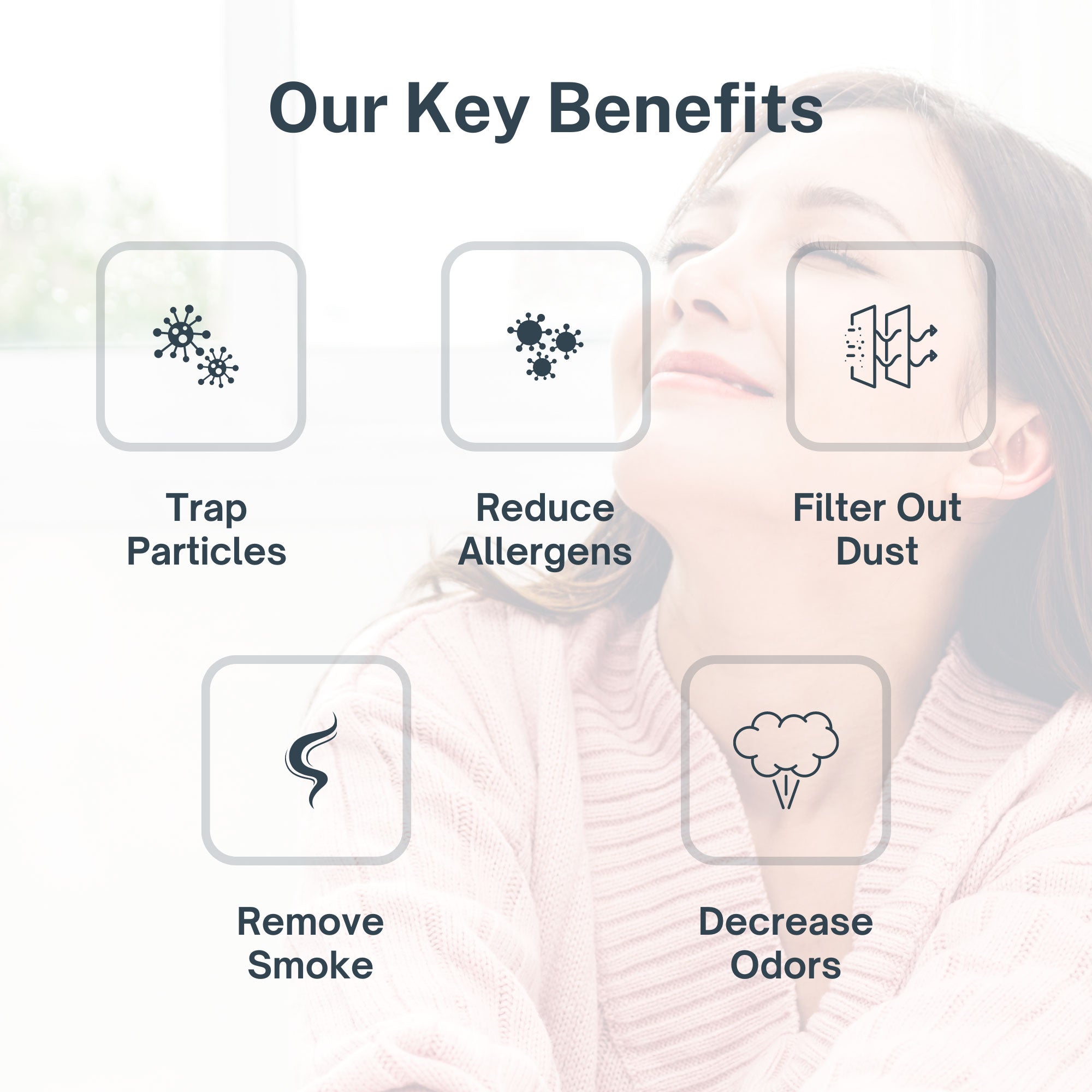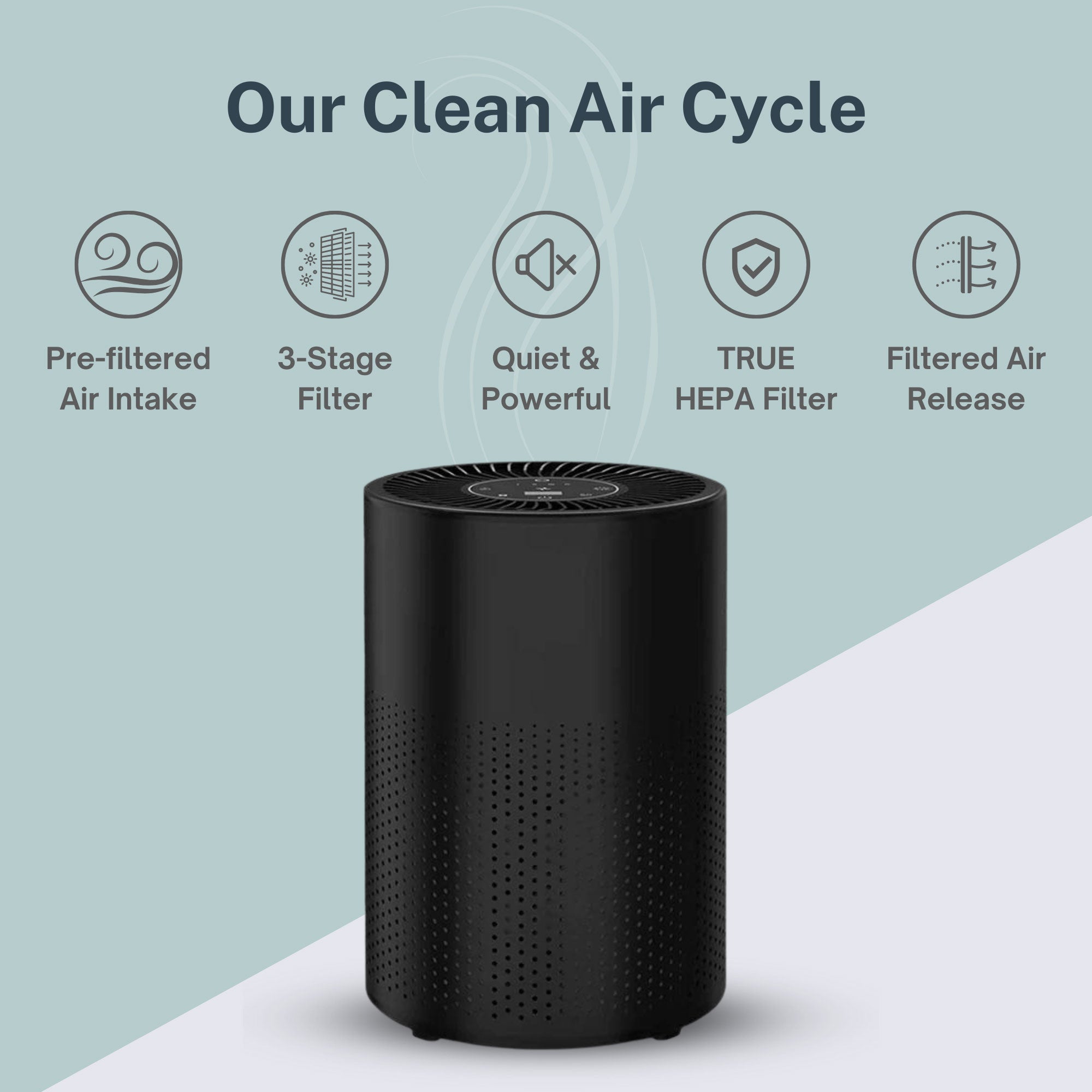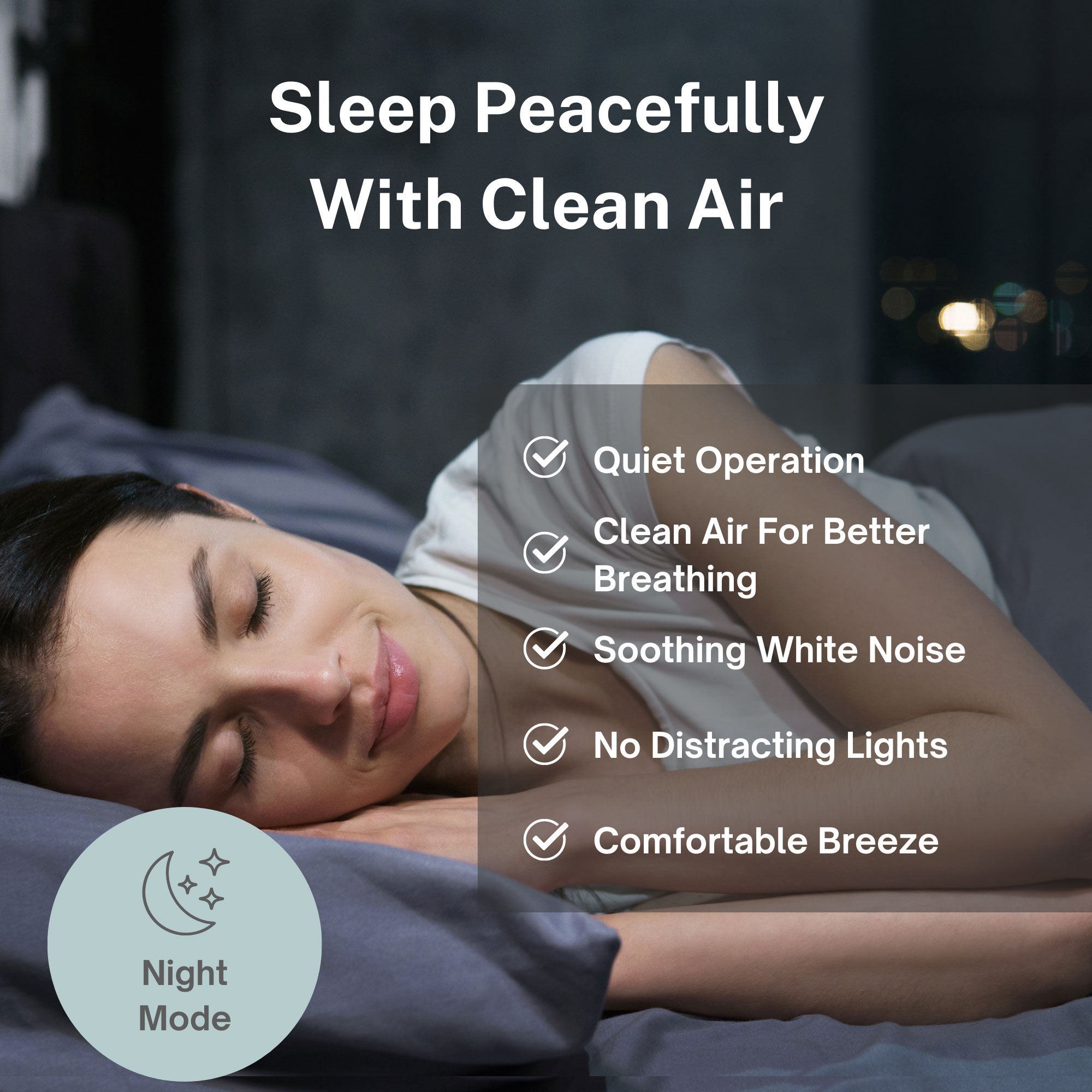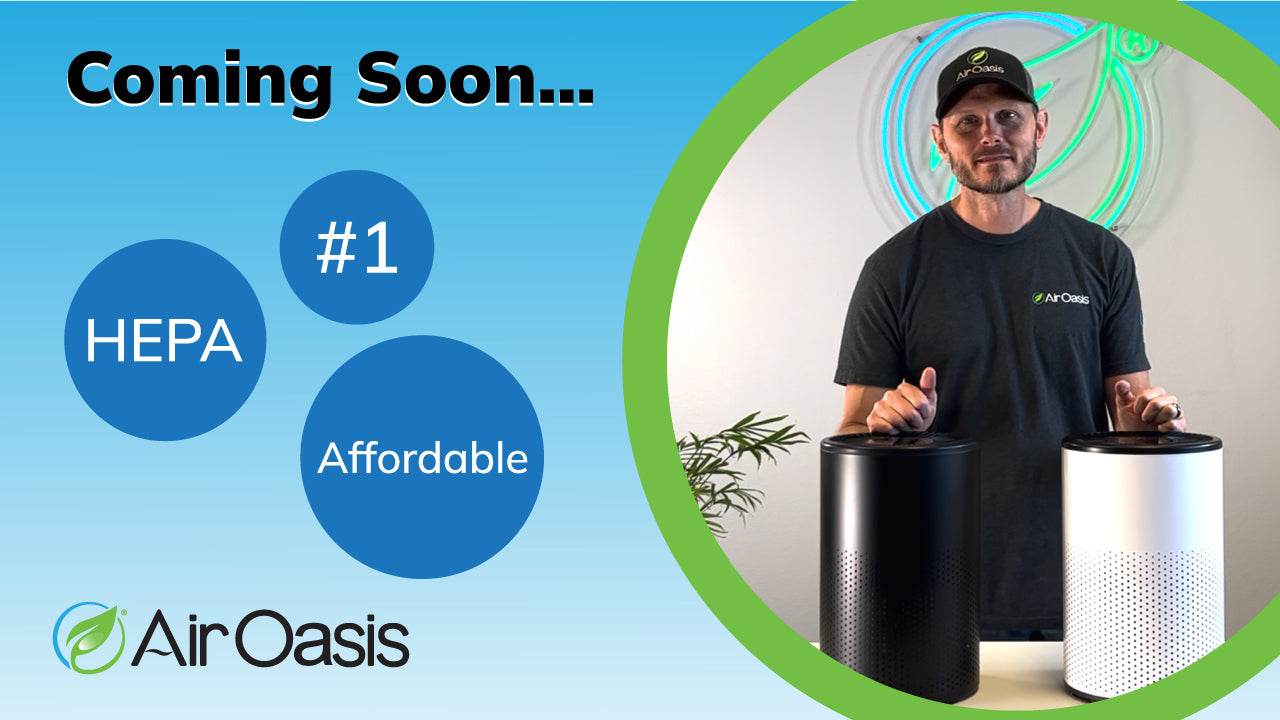With the welcome colors of fall also comes the unwelcome breeding ground for mold growth. For sensitive individuals, an end to summer means revisiting mold-related fall allergies each year.
Whether they're aware of it or not, individuals with mold allergies have an immune system overreaction when they breathe in mold spores. The best defense for mold allergies is to reduce your exposure to the types of mold that cause your reaction.
In this guide, we will cover how and why mold grows in the fall, the effects of mold, and tips to safeguard your home from mold growth.
The most dangerous aspect of mold growth for sensitive individuals is breathing in mold spores. With the help of a HEPA filter air purifier, you can properly clean your indoor air from allergy-inducing mold spores.
Does Mold Grow in the Fall?
The fall weather shift poses a problem for mold growth indoors and outdoors. Mold growth requires four criteria: available mold spores, appropriate temperatures, available mold food, and considerable moisture.
Even in the fall months, when the prevalence of mold is high, removing any of these critical criteria will prohibit mold growth. Especially in the case of indoor environments such as homes, schools, or workplaces, eliminating mold growth criteria is essential for health.
All conditions required for mold growth are present in a typical indoor environment, except the needed moisture levels. On some level, indoor mold prevention is simple: proper moisture control prevents mold. When it comes to moisture control, there are two sources: water intrusion (i.e., leaks, flooding) and water vapor (i.e., humidity in the air).
Humidity issues are the number one cause of mold growth, especially in the fall months when the temperatures drop and individuals regularly adjust the thermostats in their homes–resulting in suboptimal humidity levels. Humidity in the home can create moisture, which becomes a breeding ground for mold spores. If mold spores are in the air, they can multiply and grow as they land on moist surfaces. The ideal relative humidity level for your home is between 30% to 50%.
Different types of mold thrive in slightly different environments, but all of them have the presence of moisture in common. Types of mold include allergenic, pathogenic, toxic, and molds with both allergenic and pathogenic characteristics.
Allergenic types of mold
Aspergillus is one of the most common types of mold to grow in the fall months. It grows in many homes and is likely to grow on any damp surface, but it’s difficult to pinpoint because there are more than 180 Aspergillus mold strains, and many are different colors. Most strains of this allergenic mold are harmless. Still, a few can cause serious illnesses or result in a fungal infection known as aspergillosis in people with weak immune systems.
Another allergenic mold, Cladosporium species, prefers growing indoors in textiles, such as carpeting and upholstered furniture, although the mold also shows up beneath sinks and inside cabinets.
Alternaria mold is commonly found under sinks and along tub and shower bases where wetness can linger.
Finally, Aureobasidium pullulans mold is often found under wallpaper when it’s stripped from the walls; it also can grow on bare wood and painted surfaces.
Allergenic and pathogenic mold
Chaetomium is an allergenic and pathogenic mold most likely to develop after water damage or flooding. Because it thrives on humidity and darkness, Chaetomium spores often start growing within interior wall stud spaces and might not be noticeable until the mold spreads to the wall’s exterior.
Ulocladium is another type of mold that usually appears after flooding or water damage. Although some strains of the mold are pathogenic, others are allergenic. The mold is black and might grow alongside other types of mold, including Stachybotrys.
Some types of mold need warmth to survive, but Fusarium grows and spreads even in near-freezing temperatures. Strains of Fusarium can appear virtually anywhere. Most strains are allergenic, causing only hay fever-type symptoms, but a few strains can be highly toxic, leading to nervous system disorders and internal bleeding.
Penicillin is a valuable antibiotic, but one strain of Penicillium mold is both allergenic and pathogenic. It produces spores that can trigger allergy-type symptoms such as sinusitis, difficulty breathing, and asthma episodes. In people with immune system disorders, the symptoms can be more severe and can lead to chronic health issues.
Toxigenic mold
Stachybotrys is a toxigenic mold that thrives in wet conditions and is most likely to be found on cellulose-type materials, such as wood, drywall, or even stacks of damp leaves.
Acremonium describes nearly 100 strains of toxigenic mold that can be found in the wet condensation lines and drainage pans of air conditioners and humidifiers.
Sources of Mold in Autumn
Mold thrives in the fall months largely because of weather and indoor humidity conditions. Indoors, mold is most often found in kitchens, basements, bathrooms, and on windows. However, it can also appear at any time of the year if you experience a water leak or live in a particularly humid climate.
Windows are one of the number one culprits of mold growth in the fall months. Moisture collects on and around windows in wetter months due to condensation, which happens when warm air hits a cold surface. When the temperature begins to drop in the fall, the warm air in your home comes into contact with the cool glass of your window panes, depositing water vapor and leading to moisture buildup around your windows. In short, that’s why moisture and then mold tend to collect around windows during the colder months.
Outdoors, fall landscapes can encourage mold growth. As leaves fall and wood decays, mold thrives. Dry, breezy fall weather can also spread mold spores in the air.
Effects of Mold in Your Home
You can usually see or smell if you have a mold problem in your home. Mold is generally marked by water staining and warping and may require looking under carpets or behind cabinets and walls to find the source. There are certain areas in the home that are particularly susceptible to mold growth. These include bathrooms, window moldings, the seal of the refrigerator door, and surfaces on and around air conditioners.
Mold exposure can cause varying health effects depending on the individual. Those most susceptible to symptoms of mold exposure include immunocompromised patients and people suffering from respiratory conditions, infants, children, and the elderly.
Mold spores are always found in the air we breathe, but extensive mold contamination may cause health problems, as breathing mold can cause allergic and respiratory symptoms. Individuals with current respiratory conditions such as allergies, asthma, or emphysema, or people with compromised immune systems due to cancer or other diseases, are more likely to be sensitive to mold than others.
Other than mold spores, some mold produces toxic substances called mycotoxins, which can enter the body through your skin, airways and through intestinal absorption. Exposure to mycotoxins may cause immediate symptoms, including red eyes, fatigue, sneezing, runny nose, headaches, skin rashes, or asthma attacks.
In some cases, mold remediation may be necessary to eliminate mold spores in your home and alleviate the symptoms of the home’s inhabitants. Mold remediation is a multi-step process that involves inspection, containment, mold clean-up, and sanitization.
Safeguard Against Mold During the Fall
Individuals who experience mold allergy symptoms should take extra steps to safeguard against mold growth during the fall months. While mold allergy symptoms can mimic typical seasonal allergy symptoms, a mold allergy is specific to a type of mold called aspergillus and can cause allergic bronchopulmonary aspergillosis. Symptoms can include coughing, wheezing, shortness of breath, and asthma-like symptoms.
Preventative measures can be taken within your home to prevent, treat, and clean up mold growth.
Prevent moisture
Preventing moisture in your home means eliminating or reducing water leaks, condensation and humidity. In most environments, mold needs 24-48 hours of moisture in order to grow. If the right surface or structure in your home is wet for longer than 24 hours, you are at risk for mold growth. Follow simple habits like using a ventilation fan while taking a shower and avoiding having carpets or rugs near windows, sinks, and other places that tend to become wet.
Use sunlight
Sunlight is an easy way to prevent mold growth. Mold thrives in dark, wet spaces. Letting sunlight into all corners of your home will reduce mold growth.
Remove mold from structures
To remove mold from exterior structures such as house siding, concrete, brick, and stone, use chlorine bleach. Always take CDC-recommended safety precautions when cleaning mold, as inhalation of black mold spores can cause a significant health safety risk.
To remove mold from the interior of a structure, you will have to open the wall or area to check for structural damage and any mold growth within the walls.
To clean mold off wood, drywall, or other porous surfaces, add detergent to a bleach and water solution to help it adhere.
When cleaning structures, any materials removed due to mold growth should be bagged and properly disposed of according to CDC guidelines.
Remove mold from surfaces
To remove mold from surfaces, create a solution of detergent and water and use a sponge or brush to remove mold from ceilings, equipment, walls, and appliances. To kill mold spores, spray a small amount of distilled white vinegar. For even tougher mold stains, mix a solution of chlorine bleach, detergent, and water.
Yard clean up
In the fall months, clean up yard debris and fall leaves as soon as possible to avoid mold growth. Wet clumps of leaves are an ideal environment for mold to thrive. If you are particularly sensitive to mold allergies, wear an N-95 mask when cleaning up outside, particularly in areas you suspect mold growth.
Clean your air
One of the best ways to prevent mold in your home is to control the temperature and humidity indoors. High humidity and warm temperatures can cause mold to grow inside your home. Then, when mold spore colonies are disturbed, they enter the air and contaminate the air you breathe. An air purifier will help cleanse your air of contaminants if you suspect mold is growing in your home.
Fall Allergies, Mold, and Cleaner Indoor Air
Wiping the wet fall leaves off your shoes at the door is, unfortunately, not enough to eliminate the effects of mold and fall allergies. There are countless dark, damp places mold can grow and several ways we track sources of mold into our homes. What may seem like just a wet leaf on the bottom of your boot, can actually be the source of mold spores entering your indoor air and contaminating the air you breathe.
Air purifiers offer a preventative solution to alleviating the symptoms of mold and fall allergies. With the help of HEPA filter technology, the iAdaptAir® filters up to 99% of airborne allergens and mold.
At Air Oasis, our mission is to help families breathe better– in the fall and year-round. Part of that promise is helping people understand that the risks of mold growth for fall allergies don’t have to be a reality your family accepts. Our high-quality air purifiers clean your air so you can focus on what matters most — living a full, happy life. For questions or concerns, contact us online or give us a call at 806-373-7788.




